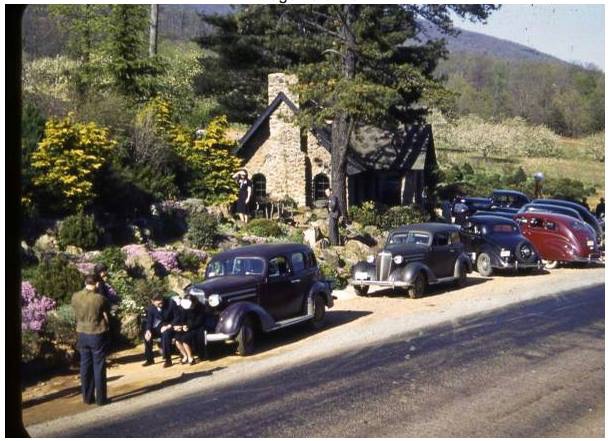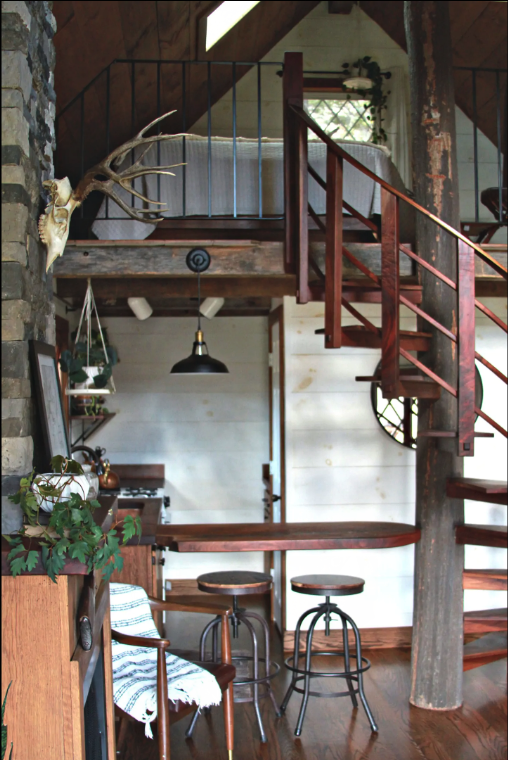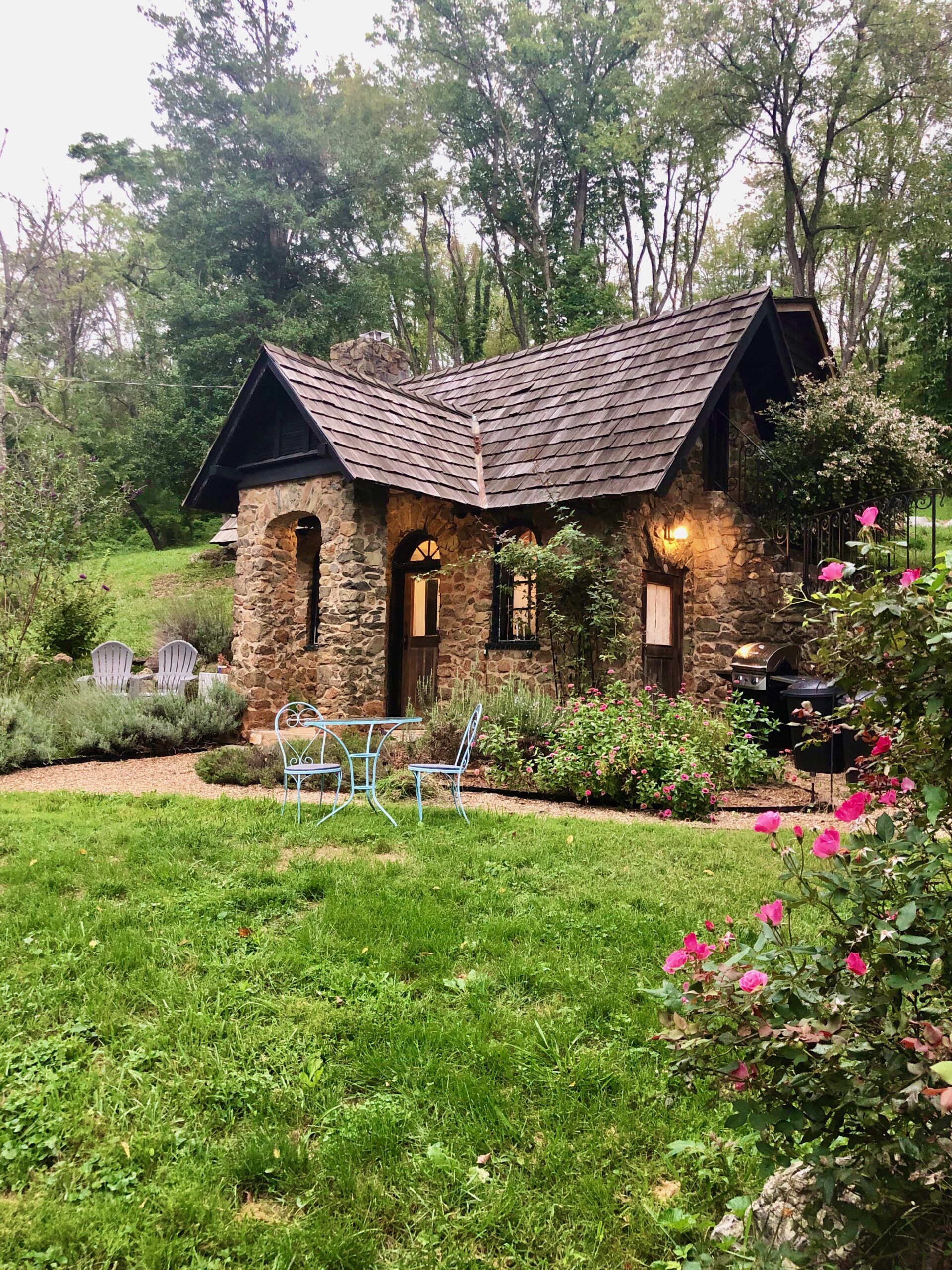
Travel has changed over the last two years. The uptick in flexible schedules and remote work means people are leaving home for longer periods of time and traveling to new destinations. This summer, AAA predicted that car travel is expected to set a new record despite the historically high gas prices.
With more people on the road, another interesting trend has emerged. Tiny houses, barns, domes, and treehouses have an increasing appeal for travelers. According to Airbnb, the number of nights booked in “unique homes” during the first quarter of 2022 for summer travel grew a whopping 80% compared to 2019, and Virginia is no exception.
Here’s a roundup of the more unique, off-the-beaten-path retreats throughout the state.
Underground Hobbit Style Dome House, Broadway, Va.
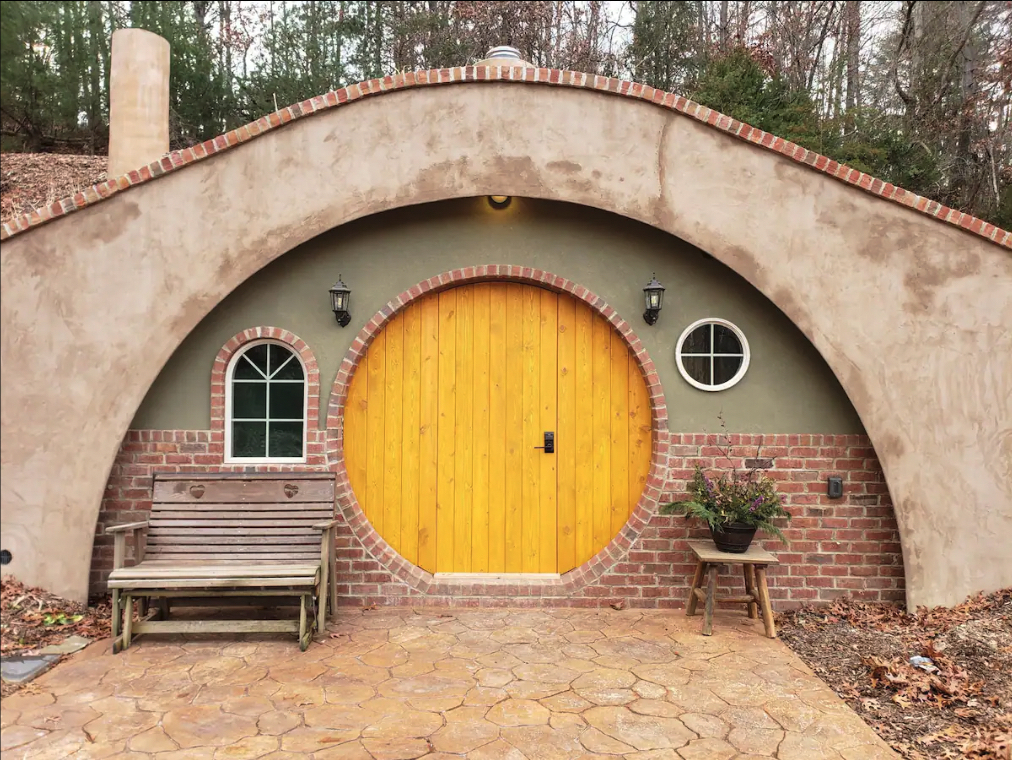
About eight miles outside Broadway, nestled in the mountains is a cozy, dome-shaped house. Closer to fantasy than reality, Owner Marlan Showalter always dreamed of building an underground house, particularly domes. Currently, he owns two in the area.
“It’s more of an art form than a building per say,” Showalter said. “[My wife and I] wanted it to look wild and natural. There’s plants on the roof which makes it fit into the landscape.”
Aptly named the “Underground Hobbit Style Dome House,” the space was built to code, so the ceilings are higher than expected at 12 feet tall–something that often surprises guests when they step inside.

“It’s not totally underground, but there’s a skylight on the roof to allow natural light,” Showalter added.
The one-bedroom dome also features a wood-burning fireplace and hi-speed wireless internet for visitors looking to work remotely or stream movies.
As for its atmosphere? “Well, I’m more of a rustic person and it was important to me that it feels homey. It’s comfortable to me, so I went with what I like,” Showalter said.
Yurt at Stillhouse Farm, Lexington, Va.
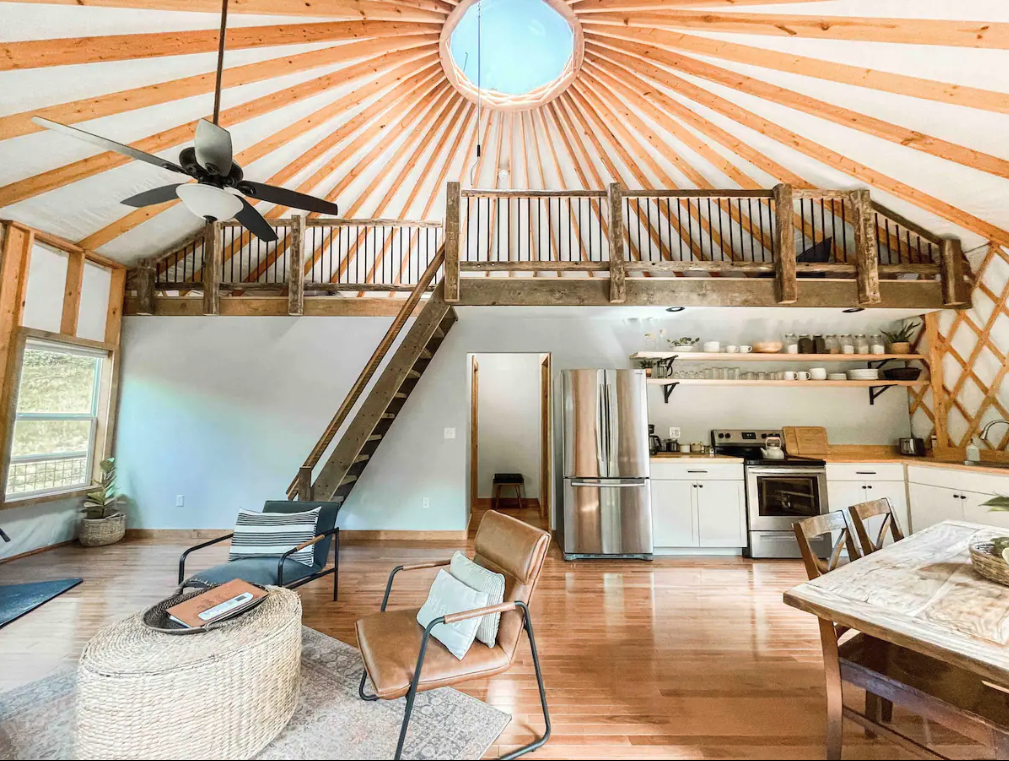
According to National Geographic, yurts have existed for thousands of years and are uniquely connected to Central Asia. Nomads, who moved several times a year, found yurts to be a useful shelter for families because it was easy to set-up and its lightweight materials were helpful for packing.
Less than five miles from Washington and Lee University, in Lexington, sits a modern-day yurt on Stillhouse Farm, owned by April and Zach Nix.
“When we bought this property six years ago, there were two homes on 59 acres,” April Nix said. “We live in the main house and after moving in, it became clear the other house, a log cabin from the 1800s, was unlivable.”
So Nix’s husband disassembled the log cabin and together, they built a yurt in its place reusing most of the lumber.
“It was important to us to carry over the history of what had been there before,” said Nix.
They admit that the building process for the yurt was a big challenge.
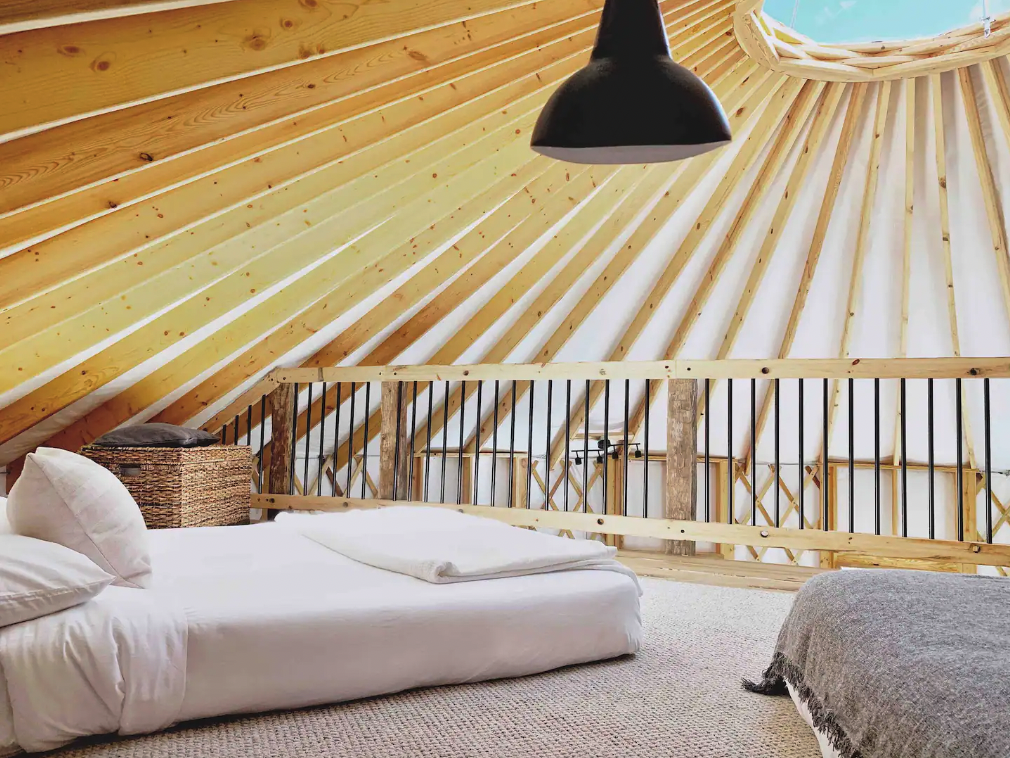
“Cutting hardwood flooring on a circle proved to be difficult,” Nix said.
The interior space is modern, light, and airy with 10-foot walls that connect to the crown ceiling. Complete with a wood-burning stove, a large deck, an outdoor firepit, a valley view, and a creek nearby, the yurt provides the peace and quiet that many Virginians seek to escape the hustle and bustle of city life.
Aelywyck Cottage, Afton, Va.
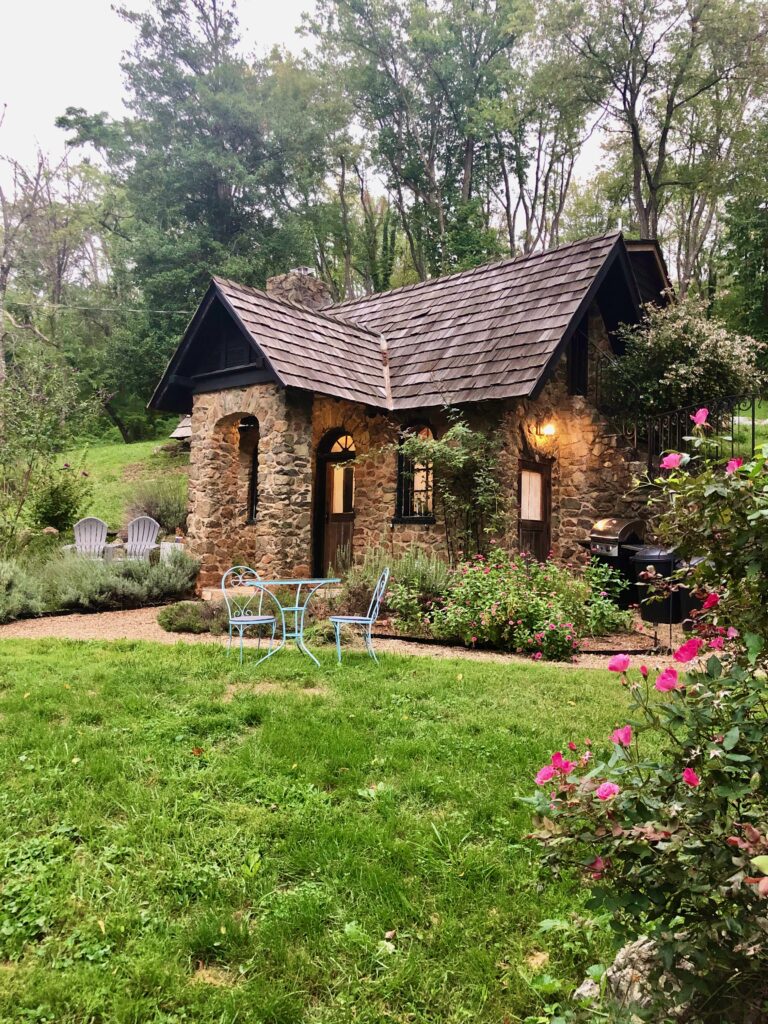
Just outside of Waynesboro, nestled in the mountains, surrounded by an herb garden and a field of wildflowers, one will discover Aelywyck Cottage in Afton. The one-bedroom, fairytale cottage is owned and operated by Evan Hansen and his wife, Missy.
“It feels like a privilege to be the caretaker of this cottage,” said Hansen.
After watching the cottage go on-and-off the real estate market for years, Hansen finally had his chance to outbid several offers and take the cottage for his own.
Originally built in 1932, Aelywyck’s past life was the site for Waynesboro Nurseries’ first location. In the Fifties, the wholesale plant supplier moved its location and Aelywyck was abandoned. It lay vacant until 1972, when a student attending nearby University of Virginia moved in and turned it into a one-room studio.
In 2018, when Hansen and his wife purchased the cottage, it was not as idyllic and whimsical as it appears today. Because it was a former commercial nursery, several vines had completely taken over the property.
“You couldn’t walk on the land without a machete,” said Hansen. “There was literally a wall of vines.”
Also infested with snakes and mice, Hansen knew it was a complete gut and remodeling project, but maintaining the history of the cottage was important.
“We kept the stones and the original roof structure,” said Hansen. “And we added two large beams to vault the ceiling.”
Good design was important to Hansen too, so he prioritized natural light and creating long sightlines and high ceilings. “You can see out from three sides of the house from the mountain,” he said.
As for the origin of the special name of Aelywyck? Hansen’s young daughter made it up, but he and his wife gave it the British spelling!
The Joshua Treehouse, Bridgewater, Va.
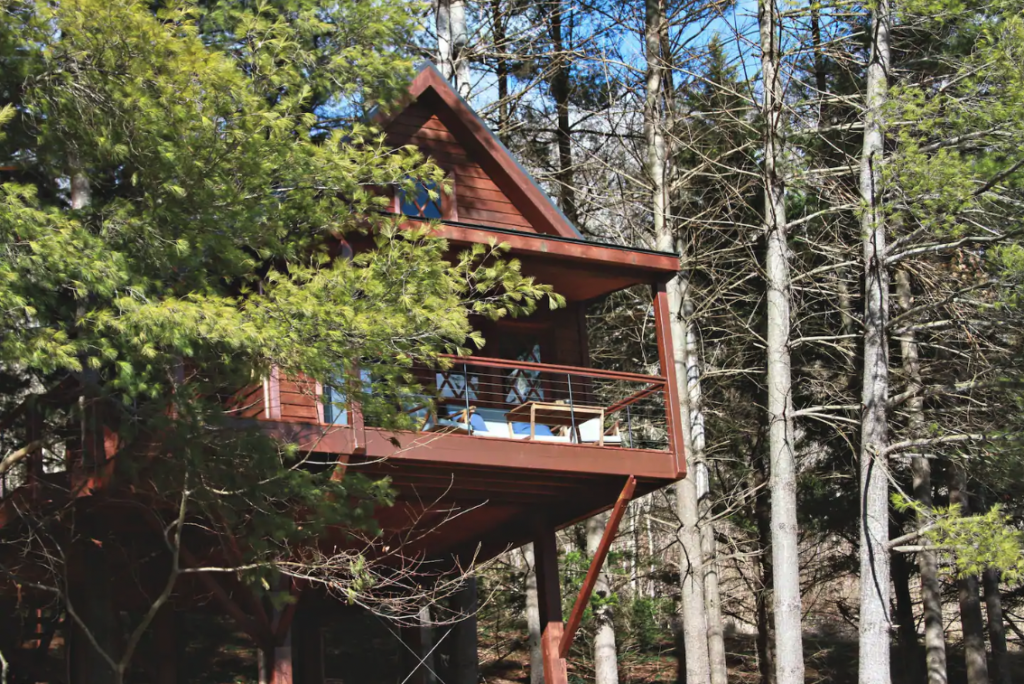
Living in a treehouse might be a long forgotten childhood memory for some, but for Joshua Helmuth it’s a fascination that grew into a passion in adulthood.
“I built my first treehouse as a kid,” Helmuth said. “That was in a Dogwood tree.”
Helmuth built The Joshua Treehouse from the ground up. Although it’s not technically supported by tree limbs, it brings visitors up close with nature.
“The structure itself is supported by poles but there is a tree that comes through the deck, “ Helmuth said.
The Joshua Treehouse sees a lot of visitors from Washington, DC, Richmond, and Norfolk. “People come to unwind,” Helmuth said. “It’s a peaceful setting.”
The treehouse has sentimental value too. All of the Black Walnut came from Helmuth’s grandfather’s saw mill and spent years drying.
“It’s the mahogany of the United States, and it’s my favorite type of lumber to use,” Helmuth said, who owns his own portable saw mill as a hobby.
But when it came to the staircase, Helmuth knew he wanted a spiral staircase to elevate the mystical feeling in a treehouse, so he incorporated an Oak tree to center the spiral around.
“Instead of spindles, I used long strips of Walnut that had to be steamed and bent” he said. “It was a very tedious process…bending and getting the curvature right.”
The hard work paid off because Helmuth said that the number one compliment he hears from visitors is the craftsmanship and attention to detail.
Team Three is an editorial and creative consultancy based in Washington, DC.

